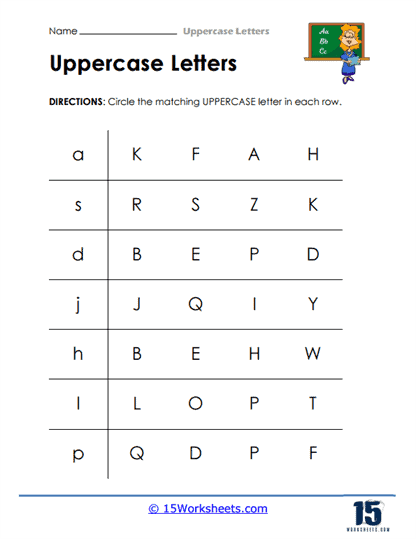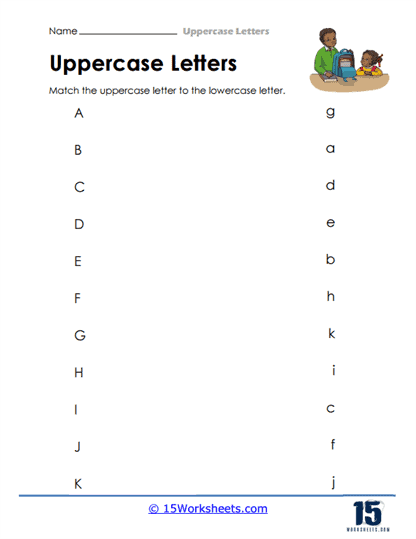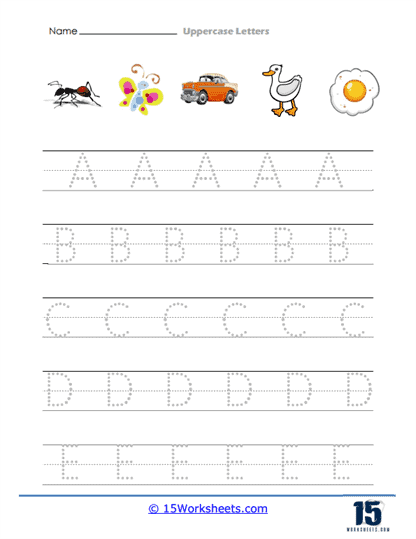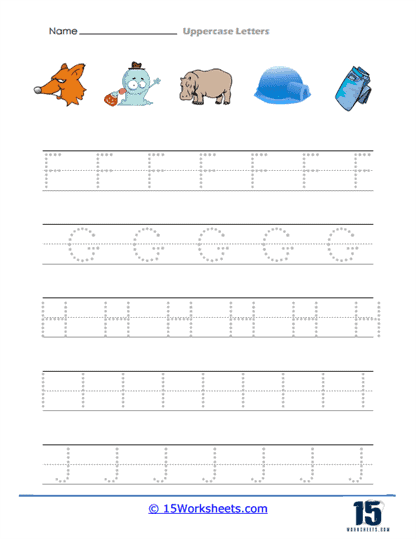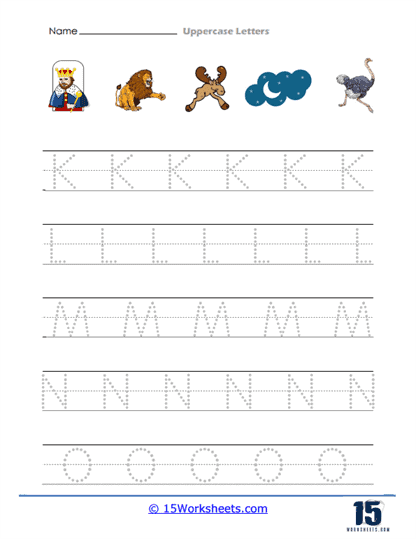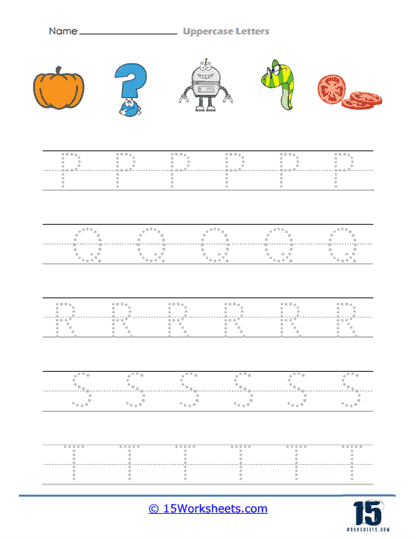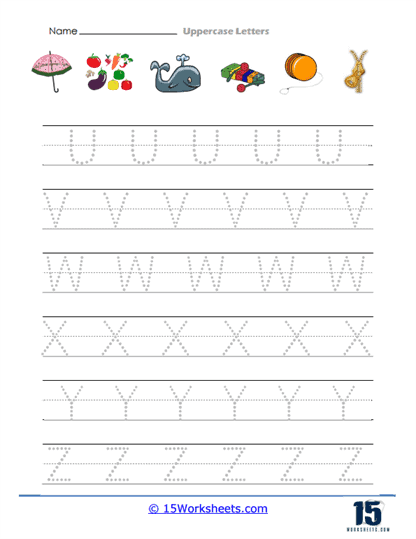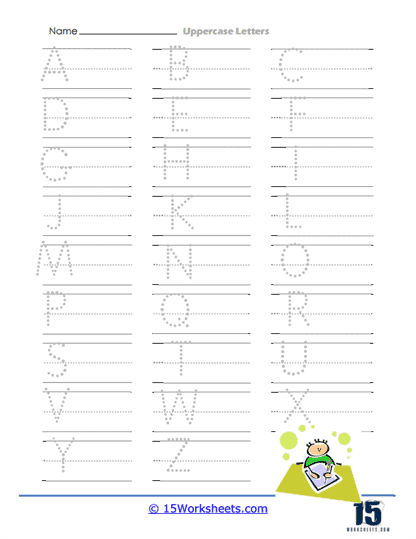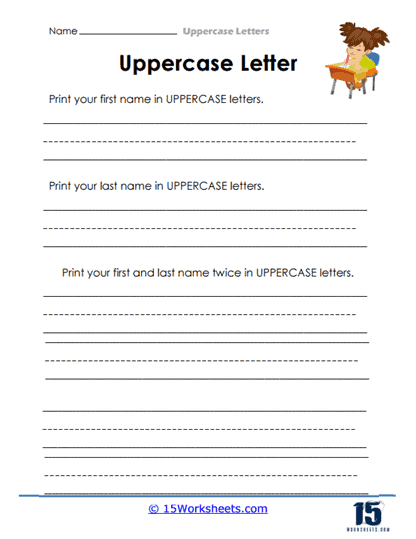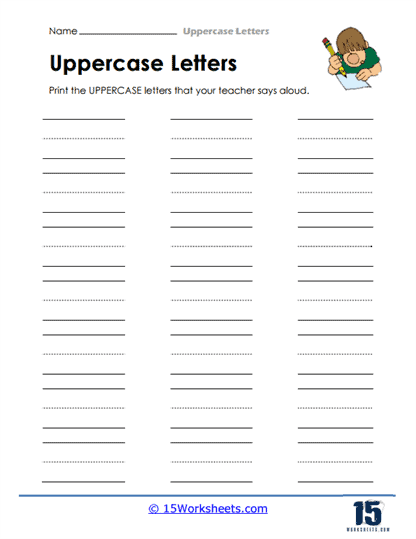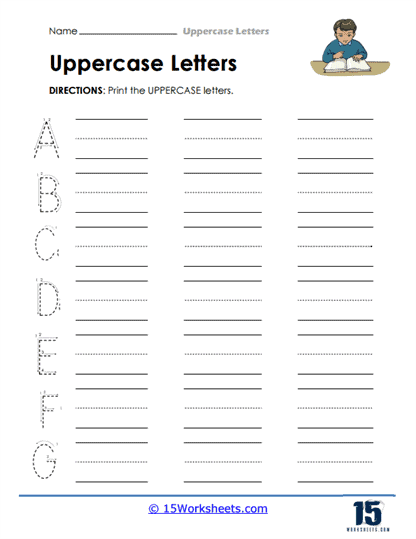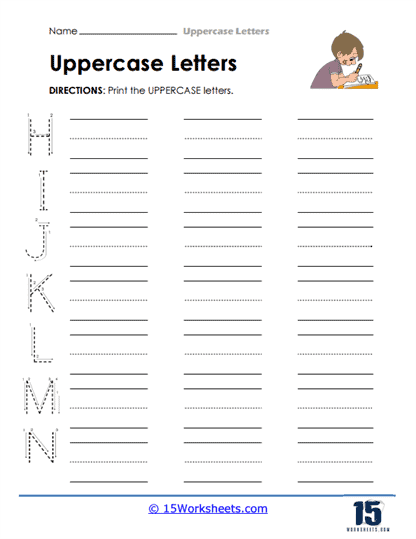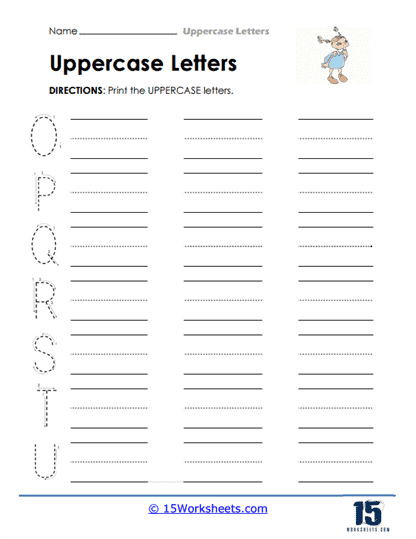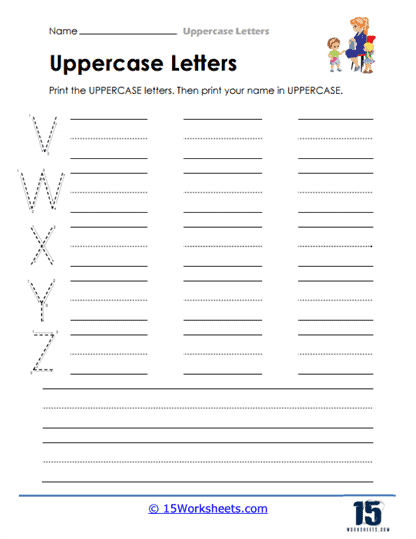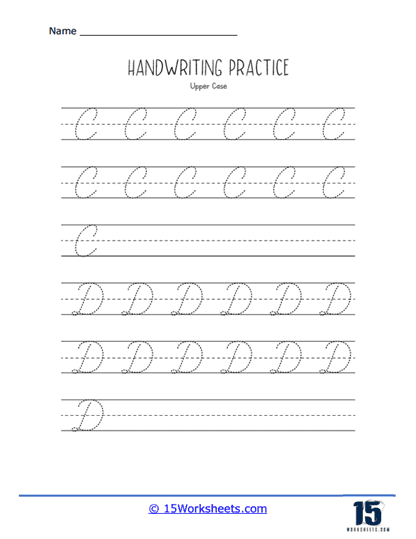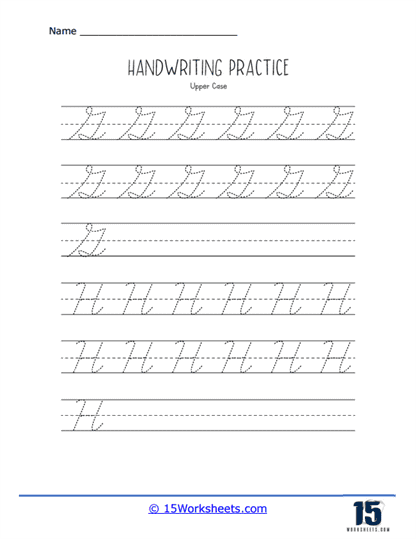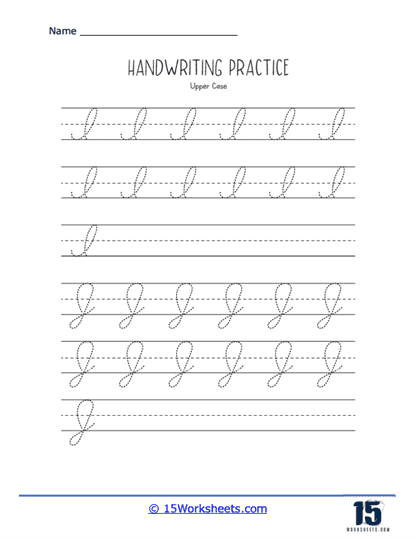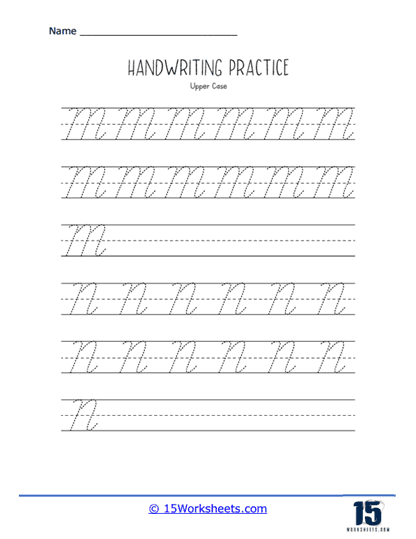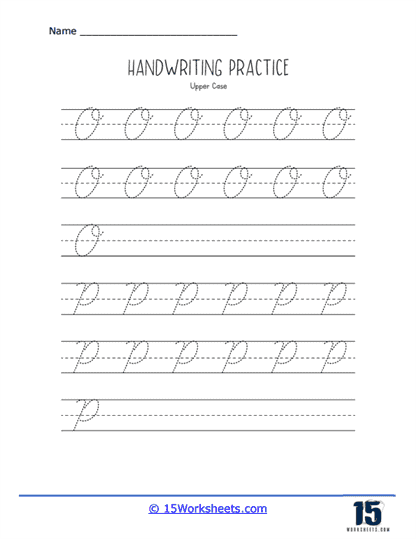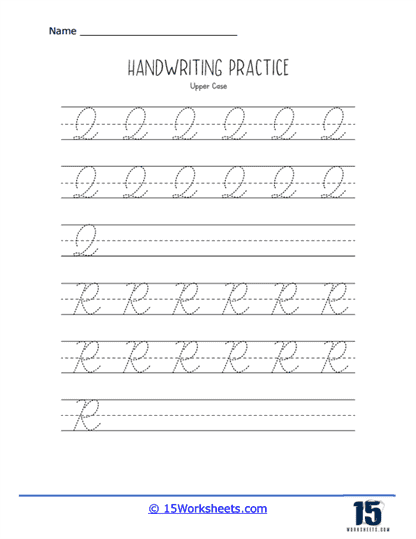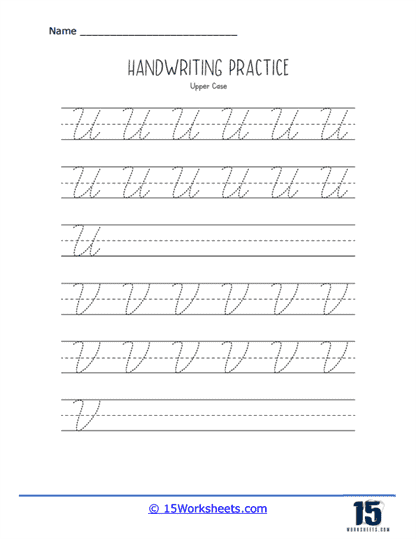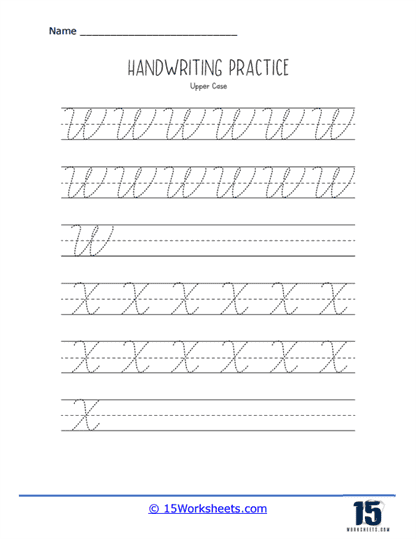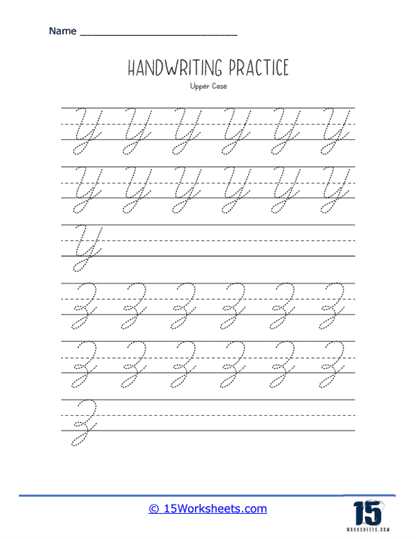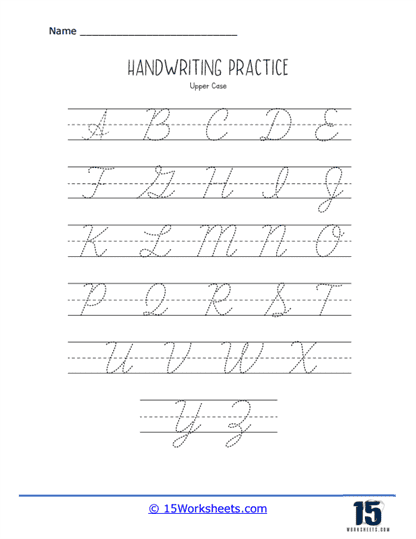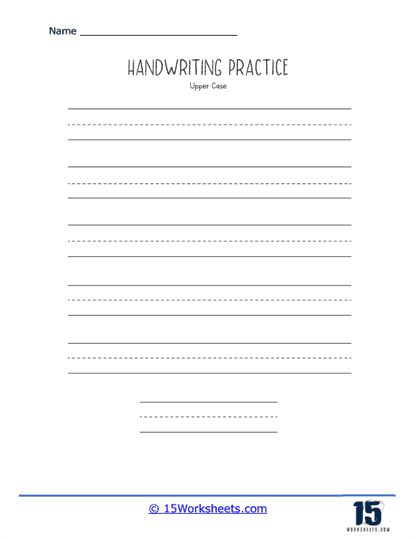Uppercase Worksheets
About These 15 Worksheets
These sheets are designed to help children learn and practice uppercase letters. They feature individual uppercase letters, and children can practice tracing, writing, and identifying uppercase letters.
Uppercase letter worksheets can come in various formats, such as:
Tracing and Writing – Worksheets may feature individual uppercase letters with dotted lines that children can trace to practice letter formation. Children can also write the letters independently on the worksheet.
Letter Identification – Children may need to identify and circle specific uppercase letters or find all the occurrences of a given letter within a word or sentence.
Phonics and Letter Sounds – Worksheets could require children to match pictures with the corresponding initial uppercase letter sound or identify the letter sound in given words.
Matching and Sorting – Children may be asked to match uppercase and lowercase letters or sort letters by specific criteria, such as by color or by letter formation.
Uppercase letter worksheets offer several benefits for children:
Letter Recognition – Learning uppercase letters helps children recognize and identify letters, which is essential for reading and writing.
Letter Formation – Tracing and writing letters helps develop fine motor skills, hand-eye coordination, and letter formation.
Vocabulary Development – Uppercase worksheets that incorporate pictures or words can help expand children’s vocabulary and improve their language skills.
Phonics – Practicing letter sounds and phonics activities helps children develop basic reading skills, including phonemic awareness and decoding.
Foundation for Learning – Practicing these types of exercises is essential for building a strong foundation in literacy skills, which are crucial for children’s success in various academic subjects.
When Do We Use Uppercase Letters When Writing?
Uppercase letters, also known as capital letters, are used in specific situations when writing. Here are some common instances when uppercase letters are typically used:
At the Beginning of a Sentence – The first letter of the first word in a sentence is always capitalized. For example, “The cat is sleeping.”
Proper Nouns and Titles– Proper nouns, which refer to specific names of people, places, organizations, and titles, are capitalized. Examples include “John,” “Paris,” “Apple Inc.,” and “President.” When addressing someone with a title, such as “Mr.,” “Dr.,” “Professor,” or “Captain,” the initial letter of the title is capitalized. For instance, “Dear Professor Smith” or “Captain Johnson.”
Acronyms and Abbreviations – Acronyms and abbreviations, which are shortened forms of words or phrases, are often written in uppercase letters. For example, “NASA” (National Aeronautics and Space Administration) or “UFO” (Unidentified Flying Object).
Headings and Titles – When creating headings, titles of books, articles, or sections, the major words are usually capitalized. This style is known as title case. For instance, “The Art of Painting” or “Chapter 7 – History of Ancient Civilizations.”
Emphasizing Words or Phrases – Sometimes, writers may choose to capitalize specific words or phrases to give them emphasis. However, this should be used sparingly to maintain readability and adhere to conventional writing norms.


